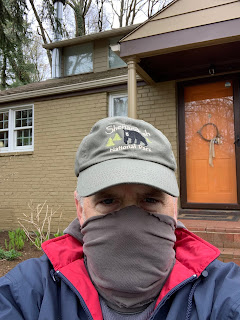SolderSmoke #239 is available for download:
http://soldersmoke.com/soldersmoke239.mp3
TRAVELOGUE:
James
Webb Space Telescope. Mars returning to
opposition in early December.
BILL'S BENCH
Hex Beam K4KIO - on roof – TV Rotor – 20-17-12 Lots of fun.
Working Japan regularly, Australia, South Africa on long path 17,000
miles. 52 countries SSB since July 11.
VFOs and Temp stabilization.
Dean KK4DAS found my ceramic resonator VFO for DC receiver drifty. He
was right. So I built a real LC Colpitts
VFO. Got me into temp stabilization. A new hobby!
An obsession. HT-37 and Ht-32
parts. Ovens? WU2D’s second VFO video. Understanding thermal drift and how to
address it. Split stator caps. Cut and
try.
Built a Polyakov DC Receiver. https://soldersmoke.blogspot.com/2010/03/polyakov-plus-dual-band-receiver-with.html Lauser Plus. Lauser = Imp or Young Rascal! DK2RS. He used a ceramic Resonator VXO at 3.58 MHz. Mine works great on 40 with VFO running 3.5 -- 3.65 MHz. See schematic below.
On 40 AM with DX-100 and MMMRX. DX-100 died.
12BY7 VFO buffer went bad. How
common is failure in this tube type? Nice QSO with Tim WA1HLR about the DX-100.
Got my Dominican license: HI7/N2CQR! SSSS on the way. Thanks to Radio Club Dominicano and INDOTEL.
Getting more active in the Vienna Wireless Society.
BOOK REVIEW:
"The
History of the Universe in 21 Stars” by Giles Sparrow. Written during the pandemic. Published by Welbeck, in London. https://www.amazon.com/History-Universe-21-Stars-imposters/dp/1787394654 Also:
From “Atoms to Amperes” by F.A. Wilson available for download. See blog.
SHAMELESS COMMERCE DIVISION:
Todd K7TFC getting ready to launch “Mostly DIY
RF.” I used his TIA boards in my 1712
rig. He will have boards like this and
much more. Stay tuned.
I need more viewers on YouTube. They want 4,000 hours IN A CALENDAR
YEAR! Please watch!
FARHAN’S NEW “DAYLIGHT AGAIN” RIG. Analog.
VFO. Comments, observations. We need to get him on the podcast. Maybe two shows: SDR and HDR.
PETE'S BENCH
Time very limited. But still sharing lots of tribal wisdom.
Wireless set with tubes!
Tool recommendation – Air compressor
Farhan VU2ESE – Speaking of big antennas “Whenever
I look at the huge construction cranes in Hyderabad, I always think how one
could make 160m, 4 element yagi using it as a boom..”
Todd K7TFC in Spain, spotting Log Periodics in Madrid.
Andreas DL1AJG: Can
Biologists fix Radios?
Janis AB2RA Wireless Girl.
Expert on Hammarlunds. And was my
first contact with the Tuna Tin 2. She too was HB!
Peter Parker VK3YE on Owen Duffy VK1OD
Lex PH2LB on homebrew radio
Would this really be homebrew? Mail from H-A-D article on FM receiver
F4IET a DSB rig from France
Ciprian got his ticket YO6DXE
Josh G3MOT sent us a good video about the Vanguard satellite
and IGY.
Dave Wilcox K8WPE bought Chuck Penson’s Heathkit book.
Rogier -- So many great articles and links from PA1ZZ
Bill AH6FC Aloha.
Retiring. Wants to build. Mahalo!
Grayson KJ7UM Working
on an Si5351. Gasp.
Mike KE0TPE viewing YouTube while monitoring 6 meters. He will have a lot of time to watch!
Chris KD4PBJ spotted Don KM4UDX from VWS FB
Mark WB8YMV building a superhet. Having trouble with 455 kc IF can filter.
Walter KA4KXX Great comment on the Daylight Again rig.
Ramakrishnan Now VU2JXN was VU3RDD. Found lost Kindle with SolderSmoke book on it. Building SDR rig from junk box. Trouble with the LM386.
Pete, Farhan and Tony: Shelves of Shame
















































